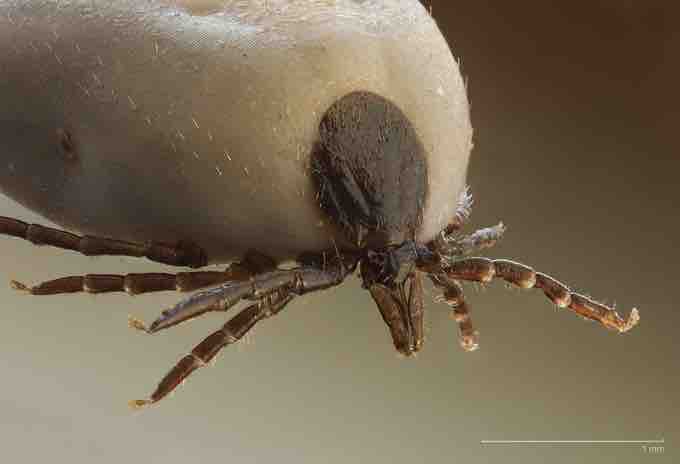Arboviral encephalitis are a group of arthropod-transmitted viruses that cause encephalitis (acute swelling in the brain). The word "arbovirus" directly refers to an ARthropod-BOrne virus. Arthropod vectors transmit the virus upon biting, allowing the virus to enter the circulatory system and replicate and shed additional infection into the bloodstream (viremia).
The majority of the arboviruses are spherical in shape although a few are rod-shaped. They are 17-150 nm in diameter and most have an RNA genome (the single exception is African swine fever virus, which has a DNA genome). Many arboviruses (such as African Swine Fever virus) do not infect humans or cause only mild and transient infections characterized by fever, headache, and rash. Those of the arboviral encephalitis group, however, can cause epidemic disease and severe infections that can be fatal. Arboviral encephalitis are found in many places throughout the world, and include California encephalitis, Japanese encephalitis, St. Louis encephalitis, Tick-borne encephalitis, and West Nile fever.
Tick-borne encephalitis (TBE) is an infectious disease of the central nervous system. It can infect a range of hosts including ruminants, birds, rodents, carnivores, horses, and humans. The disease can be zoonotic, with ruminants and dogs providing the principal source of infection for humans. TBE is transmitted through the bite of several species of infected ticks, including Ixodes scapularis, Ixodes ricinus and Ixodes persulcatus, and manifests most often as meningitis, encephalitis, or meningoencephalitis.

Chelicera of the sheep tick
Sheep ticks (Ixodes ricinus) such as this engorged female transmit encephalitis.
TBE Infection can be reliably prevented by vaccination, but is incurable once manifested. Long-lasting or permanent neuropsychiatric sequelae are observed in 10-20% of infected patients; morality occurs in only 1-2% of the infected, with deaths occurring 5 to 7 days after the onset of neurologic symptoms.
TBE and other arboviral encephalitis can be diagnosed through a combination of blood tests, particularly immunologic, serologic, and/or virologic techniques such as ELISA, complement fixation, polymerase chain reaction, Neutralization test, and Hemoagglutination Inhibition test.
Because the arboviral encephalitides are viral diseases, antibiotics are not effective for treatment and no effective antiviral drugs have been discovered yet. Treatment is therefore only supportive, attempting to deal with problems such as swelling of the brain, loss of the automatic breathing, activity of the brain, and other treatable complications like bacterial pneumonia.
Therefore, the immune system plays an important role in defense against arbovirus infections. Arboviruses usually stimulate the production of interferons and antibodies, which help to diminish the extent of viremia. Cell-mediated immunity is also important. Increased immunity is observed with age progression.
Vector control measures, such as habitat control (including the elimination of stagnant water and the spraying of insecticides), are essential to reducing the transmission of disease by arboviruses. People can also reduce the risk of getting bitten by arthropods by employing personal protective measures such as sleeping under mosquito nets, wearing protective clothing, applying insect repellents, tick-checks, and avoiding areas known to harbor high arthropod populations.